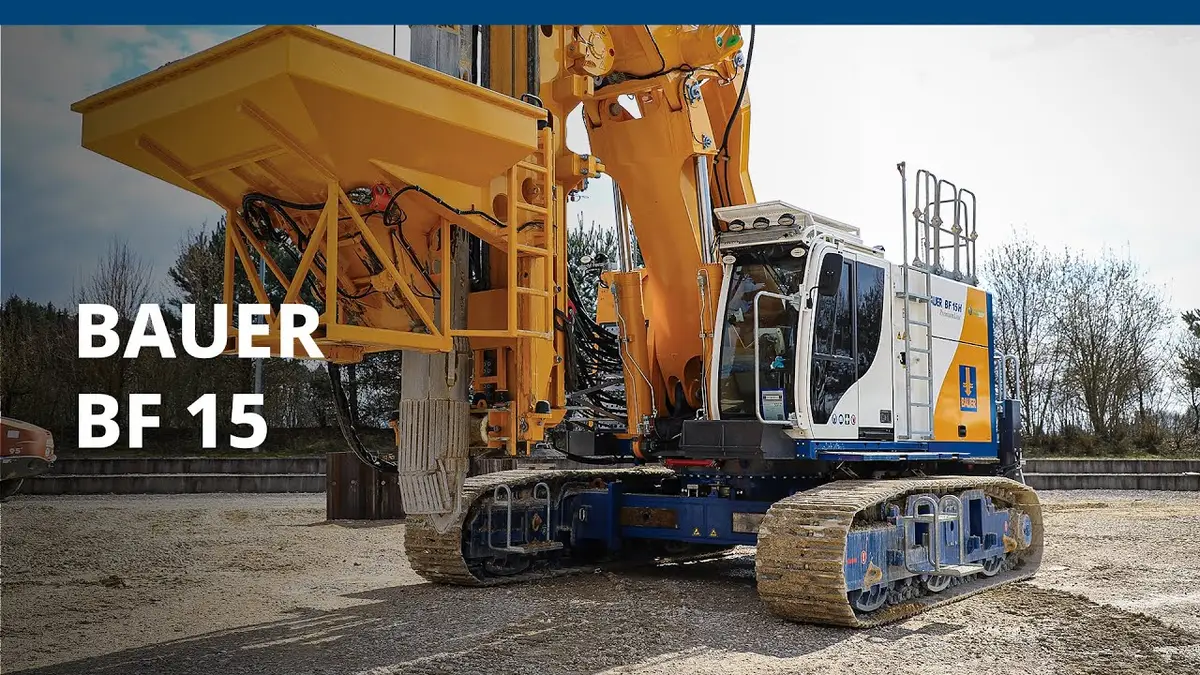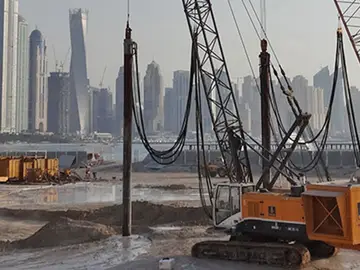Soil improvement in specialist foundation engineering
Soil improvement methods aim to increase the load-bearing capacity of the subsoil and prevent settlement of the future structures. Furthermore, they can reduce soil liquefaction (for instance in the event of earthquakes). Deep vibration methods are often a fast and economical option for improving the technical characteristics of the construction soil. Apart from vibro compaction and vibro replacement, vibro concrete columns are also used for this purpose.
Vibro Compaction (VC)
Vibro replacement
This method is used on soils with more than 10% cohesive particles. With the “Bottom Feed” VR, however, the leader-guided bottom feed vibrator is brought to the end depth using flushing air and active crowd force. The installation material is transported directly to the outlet on the vibrator tip using a feed unit and charging pipe, then radially displaced and compacted in tamping stages. The tamping pattern (quantity, pressure) is defined and monitored individually.
Soils with more than 10 % cohesive particles can no longer be moved and compacted using vibrations. The soil improvement that can be achieved here comes from the construction of load-bearing gravel columns. For VR “Top Feed”, the vibrator is brought to the end depth with the help of water or water/air. The installation material added at the surface reaches the vibrator tip through the annular gap that is created. Through continual tamping movements, the material is radially displaced and compacted until a pre-defined stopping factor (hydraulic pressure, gravel volume) is reached.
The Vipac System can be used to construct sand and gravel columns in a relatively easy and cost-effective manner. The installation procedure is based on alternating between lowering and pulling up the pipe. The material can be filled with a telescoping loader even during vibration.
Vibro Concrete Columns (VCC)
Dynamic compaction (BDC)
Flying Vibro 75

BAUER BF 15: A complete system for the construction of stone columns using depths vibrators.

Soil improvement with vibro replacement (VR) Bottom Feed

Downloads
Any questions?
I look forward to receiving your message or your call.
You might also be interested in:
Whether drilling, impact driving, cutting, mixing or vibrating, the variety of specialist foundation engineering methods is impressive. An overview of the most common methods.
Discover rental equipment & used equipment from Bauer as well as accessories for specialist foundation engineering. Learn more & save money!
Every day, our products put their strengths to the test. Take a trip with us to customer sites around the world!
